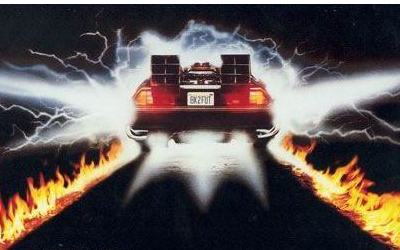
In the L.A. Times of April third, 1988, journalist Nicole Yorkin paints a picture of a family’s regular workday in 2013. With the help of futurologists and technology specialists she predicts many things strikingly well, like all sorts of communication via internet. But other fantasies we are still waiting for now that it is 25 years later, if they ever enter our daily lives at all. Five examples:
1. The biggest dream that didn’t yet make it to reality is robots in our homes. In the eighties people envisioned pet-robots for the children, switching on their favourite music and helping them with their homework. But also regular home robots for the whole family, that roll around waking everybody up, cooking diner and cleaning the house. Today a lot of futurologists still say that this robot phase is just around the corner. In Japan there may indeed be operating a few robots like this, but the rest of us probably have to stick to just dreaming about these robot maidsfor the next couple of years.
2. Another optimistic view on the future was about visualizing. If you couldn’t make it to a meeting in 2013, they would just project your holograph in between your colleagues. While fitnessing in the gym, a helmet would make you feel like you were jogging in pure nature. And your house would be decorated easily by projecting images on the wall, hanging a Monet next to the dinnertable if intellectual guests were coming over.
3. Futurologists in the eighties were predominantly male, so they spent a lot of time fantasizing about cars. They were actually quite right about most of the technology, predicting very advanced navigation and anti-bumping systems. What they did get a bit too enthusiastic about, however, were shapes and sizes. In general, cars would be much smaller, but they would especially come in all kinds of varieties. Some of them extremely small, like beach buggies. The inside, less tied to aerodynamics, could change even more drastically. In 2013 interiors would even automatically adjust themselves to the driver that stepped in.
4. A somewhat sadder hope that didn’t make it: high-tech education. They imagined classrooms covered by projectors, so that the kids could actually feel like they were in the middle of a pyramid. All schoolwork would be digital, with the students playing with 3D-images on their computerlike desks. And language barriers wouldn’t be a problem anymore, since the teachers speech would immediately be translated.
5. What isn’t in the L.A. article, but was a popular idea, is meal-in-a-pill. With population growth and advancements in chemistry, it was easy to imagine people eventually just taking pills to get enough nutrition. According to Warren Belasco, who wrote an article about it in 2000, this idea wasnot so much a common prediction of futurologists, but rather a popular thought among the public. If we look at what we eat now the skepticfuturologists were right. Our meals seem to be growing, rather than shrinking to the size of pills.
Source: LA Times
Warren Belasco (2000). Future notes: The meal‐in‐a‐pill Food and Foodways DOI: 10.1080/07409710.2000.9962093
Gepubliceerd op United Academics